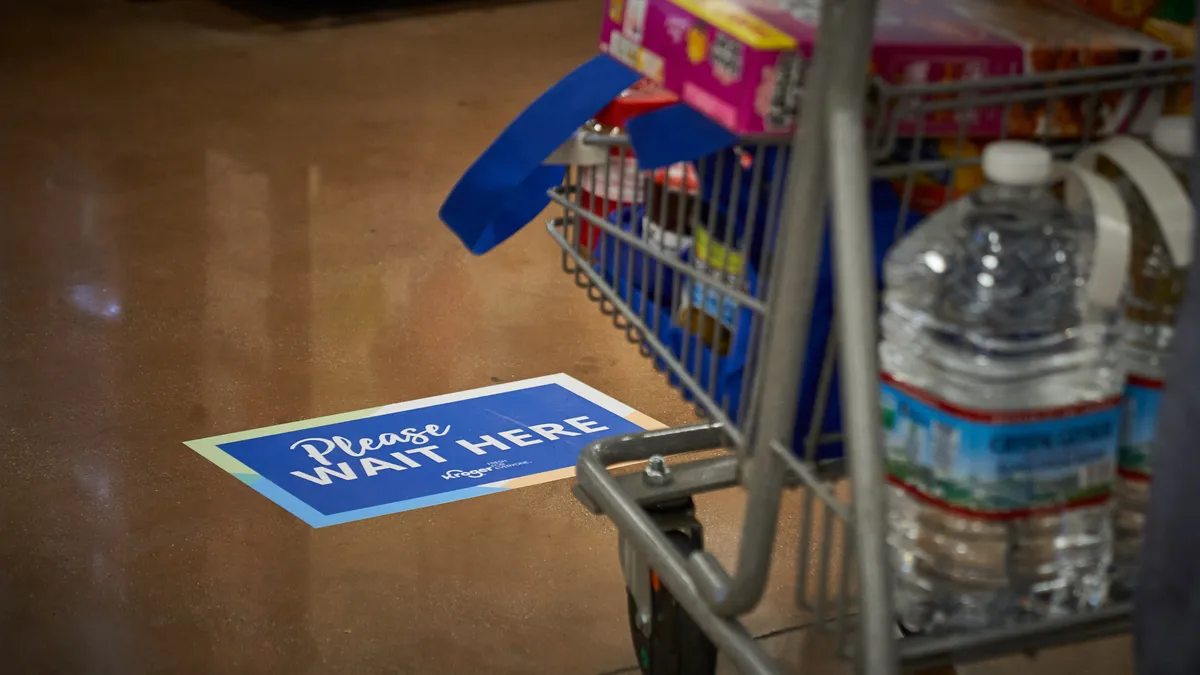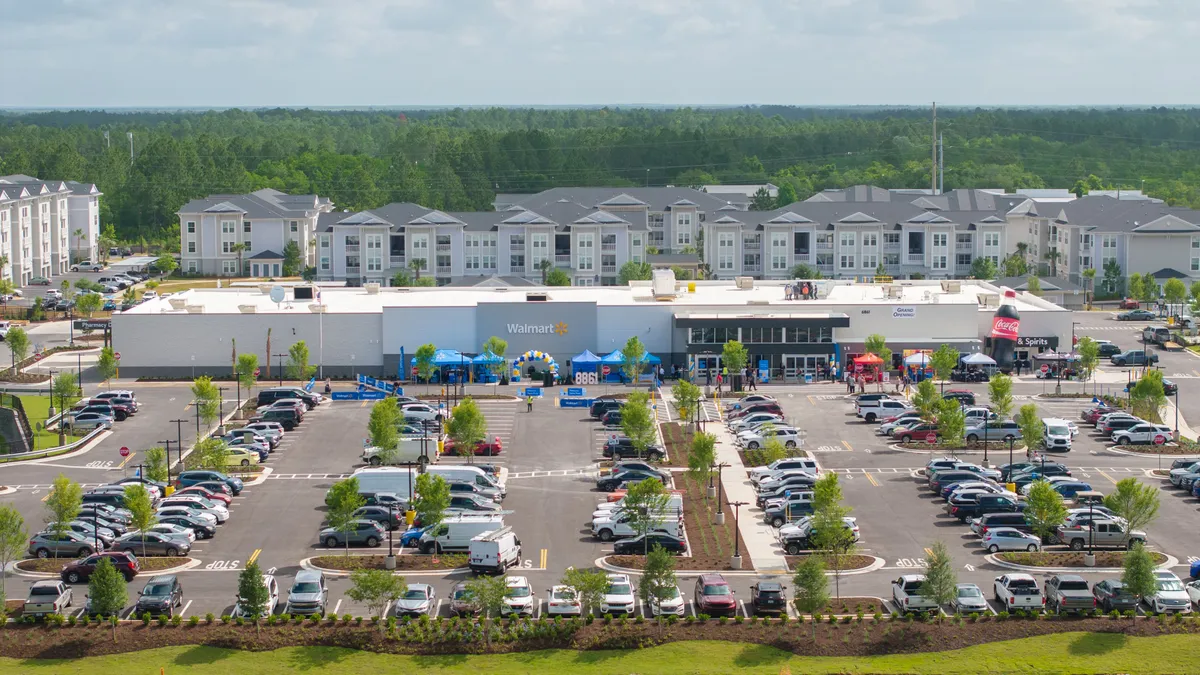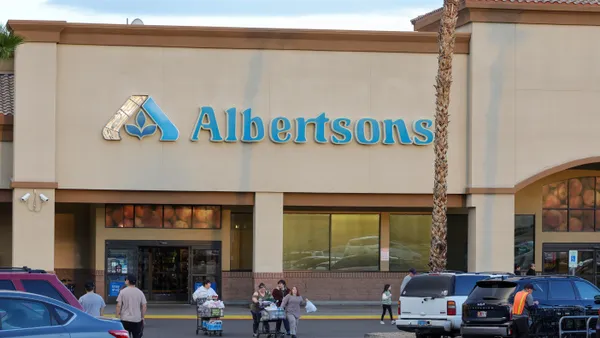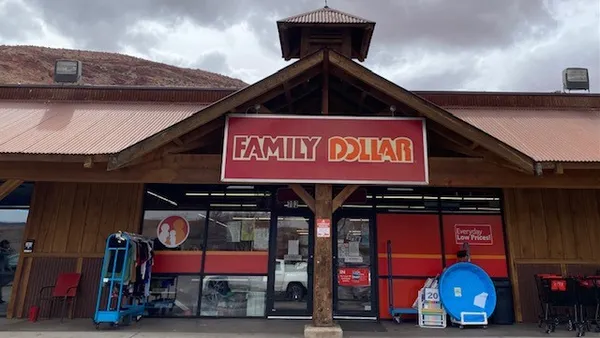Dive Brief:
- Kroger will begin limiting the number of shoppers allowed into its stores at one time starting April 7, the company announced in a press release. Stores will allow 50% of the international building code’s calculated capacity or roughly one shopper per 120 square feet.
- The grocer will use its QueVision Technology to monitor customer capacity. That system detects the number of shoppers entering and exiting each store and is primarily used to speed up checkout lines.
- The move comes one day after Walmart announced it will limit its customer capacity per store to five per 1,000 square feet. Target, Costco, Trader Joe’s and numerous other retailers have also begun limiting shopper flow inside stores. Last week, Kroger announced it will start testing one-way aisle traffic in select markets.
Dive Insight:
Kroger isn’t the first grocer to limit the number of shoppers flowing into its stores, but it is the first to highlight the use of store technology in helping it maintain optimal levels.
Kroger’s QueVision system began rolling out to stores nearly a decade ago and is currently in use at most locations, Kroger spokeswoman Kristal Howard told Grocery Dive. Using infrared sensors and predictive analytics, it monitors customer flow and up to this point has primarily been used to speed up checkout by indicating how many registers should be open at a time. According to published reports, the system has cut average front end wait times from four minutes to less than 30 seconds.
Under this new setup, the technology will let an employee know when a store has reached 50% capacity. Workers will then direct shoppers to form a line outside and maintain the recommended six-foot distancing while they wait. When shoppers exit, waiting customers will be let in.
Along with its one-way aisles initiative and floor markings at checkout meant to indicate proper shopper distancing, Kroger is trying to enforce safety measures following an in-store rush last month. Store visits have declined recently, with foot traffic at Kroger stores down 32% on March 29, according to a tracker developed by Placer.ai, meaning stores should have an easier time controlling traffic flow.
Howard said Kroger doesn’t anticipate stores will exceed 50% capacity very often.
“Over the last few weeks, customers’ shopping patterns and frequency have changed, so we do not anticipate our stores reaching capacity often,” she told Grocery Dive in an email.
Other steps Kroger has taken to enhance social distancing include installing plexiglass shields and marking out customer spacing at checkout. The company is also providing safety masks and gloves for workers, taking temperatures of employees at its distribution centers and encouraging all associates to take their temperatures before coming into work, and stay home if they don’t feel well.














